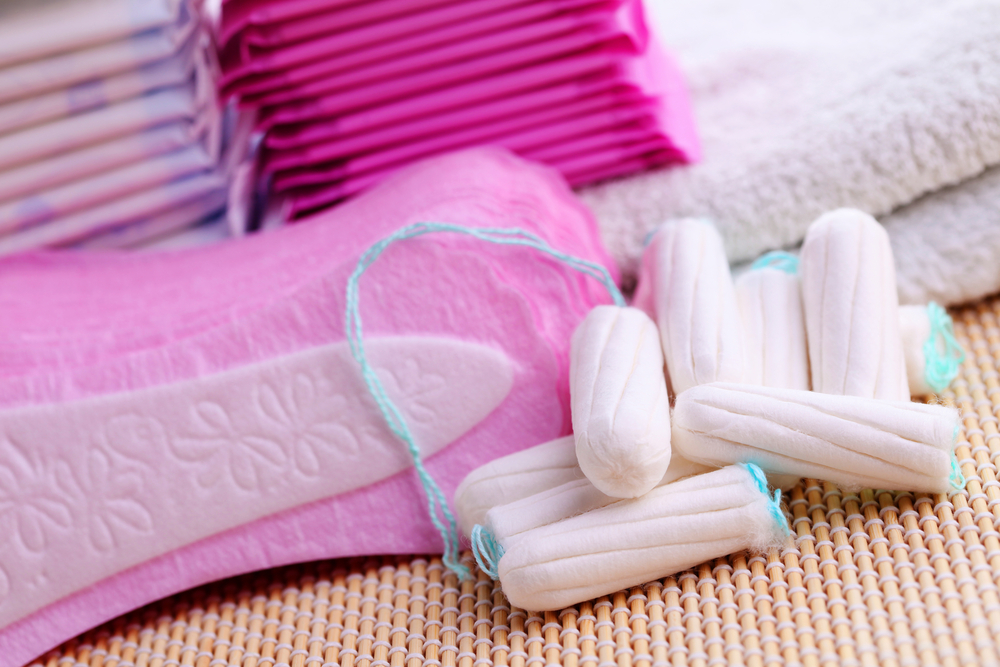On February 9, tampons disappeared from store shelves across Mexico City. The decision to ban tampons was borne out of a larger crusade to eliminate single-use plastics across the city, which since January 1, has abolished plastic bags, straws, and cutlery. Mexico City’s strategy to eliminate tampons is due to the single-use plastic applicators included in the most popular brands. The city decided not to gradually phase tampons out, but instead to impose a ban on sale practically overnight. Though government officials claim this ban was announced far in advance, that did not ease the tension felt by many when they awoke to find the city devoid of tampons.
Was it ethical for Mexico City to ban single-use plastic tampons? Do people who menstruate have an obligation to prioritize reusable products? How can we weigh environmental issues against health and autonomy?
Though evidence of single-use tampons has been documented since at least 3,000 BCE, it was not until 1920’s that the first single-use tampons and pads were mass produced. These single-use tampons first began using plastic in the 1970’s, which some argued made application easier than the cardboard alternatives. The preference for plastic tampons is reflected in North America and Europe, but in many other parts of the world, tampons are devoid of plastic. The advent of accessible menstruation products marked an increase in women’s health and autonomy. Relative access to menstruation health management has been linked to women’s health outcomes and general well-being.
Many criticisms of Mexico City’s tampon ban come largely due to its implementation. For many who menstruate, the convenience of stopping to pick up products when caught off guard is a necessity. As roughly 26% of the world population experiences menstruation regularly, menstrual hygiene has been recognized as a critical human rights issue by prominent human rights organizations such as the Human Rights Watch and UNICEF. Though menstruation is often painted as a women’s rights issue, it is also fundamentally an issue of health. Lack of access to feminine hygiene products has been linked to an increased risk of reproductive and urinary tract infections and urogenital diseases. In many countries in the world, menstruation is still highly stigmatized despite access to products. Additionally, very few countries in the world subsidize menstruation products, instead placing the financial burden on menstruating individuals to cover the cost. With all of these challenges already faced by individuals who menstruate, Mexico City’s decision to eliminate affordable menstrual products stands to exacerbate existing class and sex inequities.
One defense of Mexico City’s ban is the fact that in the long-term, reusable menstrual products are cheaper in addition to being better for the environment. Alternatives such as menstrual cups or even reusable pads save menstruating individuals from having to buy new products every month. However, while these products may be cheaper in the long term for many poor individuals the one-time cost of these products is simply too high as it demands an ability to financially invest in the long term. Those barely able to afford the cheaper disposable products month to month, living paycheck to paycheck or worse, simply do not have the bandwidth to buy these reusable products. The pandemic has also taken a toll on the financial well-being of Mexicans, a country with roughly 10 million people in poverty. Additionally, reusable products are not simply a financial investment in the product itself, but also demand an investment in terms of clean water and cleaning products to properly sanitize these products during usage. The role of clean water in reusable menstruation products becomes even more important when realizing that more than 260,000 homes in Mexico City lack running water. For these reasons, it is not practical nor ethical to obligate menstruating individuals with very little disposal income or access to clean water to switch to reusable hygiene products.
However, putting aside class-based concerns, are those who are capable obligated to switch to reusable menstrual hygiene products? As people had been menstruating hundreds of thousands of years before the invention of single-use plastics, it is clearly possible to menstruate without these products. Depending on one’s access to alternatives, it is arguable that switching to more sustainable menstrual products is part of one’s larger obligation to cut down on plastic consumption generally, especially considering the growing current plastic pollution crisis. However, choosing which menstrual product to use is arguably more than a simple consumer choice. Menstruation is fundamentally a matter of health, and how one approaches it can be deeply personal. There is also something to be said about comfort and preference. Every menstruating individual has a different preference and different products might not be comfortable or feasible depending on their body. With this in mind, menstruation health management is a matter of bodily autonomy. Limiting the types of menstruation products available also restricts an individual’s ability to choose which product works best for them. For this reason alone, some might argue that Mexico City’s decision to outright ban tampons was unethical, as it robbed millions of individuals the right to choose a menstruation tool often relied upon.
The continued stigmatization of menstruation only further demands sensitivity when determining an individual’s obligations in relation to it. While it might be difficult to determine whether reusable menstruation products are obligatory, it might be fair to say that single-use plastics products should be avoided if possible, considering the growing environmental crisis. In many parts of the world, tampons without plastic applicators are widely used. Reusable products have also taken off, and are lauded by many women, reflected in both reviews and in their growing market share. Notwithstanding health and class-based concerns, individuals should explore ways to decrease their consumption impact generally, and one’s choice of menstrual products represents one way to do so.
While an individual may hold an obligation to decrease their waste and consumption, it is another step to justify the government’s decision to outright ban hygiene products without subsidized alternatives. As I have discussed in a previous article, there is a strong argument that governments and corporations bear the brunt of responsibility in addressing the plastic crisis. From this angle, Mexico City’s decision might be viewed as a progressive and necessary step in eliminating its plastic pollution. However, the decision to ban these products without comparably convenient or affordable alternatives could be said to be an injustice in itself, as it greatly impacts the health and autonomy of millions of people who menstruate in Mexico City. And perhaps this tradeoff is not necessary. Those leading the charge against plastic tampons have also largely pushed for government responsibility to provide alternatives.
In what some may see as a great irony, the government officials who led the charge to ban tampons — Mexico City’s mayor, Claudia Sheinbaum, and the director general for environmental regulation, Lilian Guigue — are both women. In a statement to the Financial Times, Guigue tried to justify the decision by explaining that she had attempted to negotiate with tampon producers to develop alternatives. However, the decision to immediately ban tampons is a reflection of her belief the crisis demanded immediate action.
Environmental issues from climate change to plastic pollution will undoubtedly demand radical consumption changes. Governments around the world, including that of Mexico City, should be aware that a commitment to rapid changes devoid of socioeconomic considerations will unquestionably lead to negative consequences for already marginalized people.


